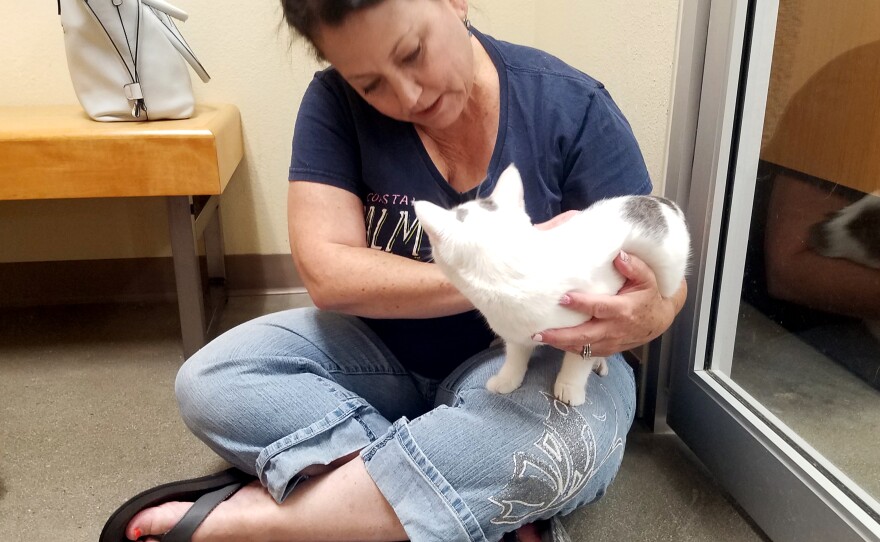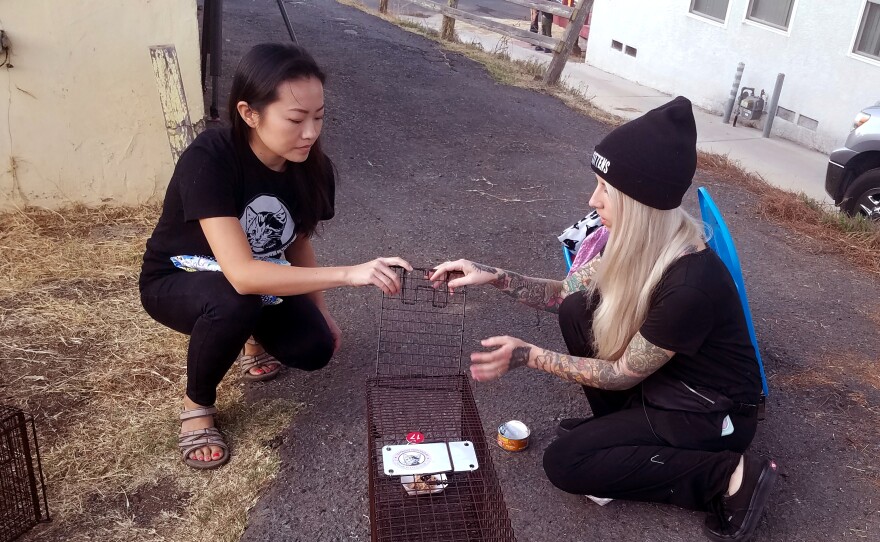Since taking over animal control services for San Diego and several other local cities last year, the San Diego Humane Society has allowed more than 1,200 stray cats to be released back to the streets.
It's part of a program called "shelter neuter return," or SNR, where a cat found outdoors is brought to a Humane Society shelter, then is spayed or neutered and vaccinated, then released. The idea is it’s more humane to release a cat than possibly euthanize it.
But it's a controversial practice that even divides cat lovers—some support it, but others say it's cruel to put cats outside. And other animal rights advocates and environmentalists vehemently oppose it because of the impact cats have on the environment. When San Diego County's Department of Animal Services ran animal control, it didn't use the program.
Of the approximately 1,200 total cats released, about 700 were either released by the Humane Society or by people who brought the cats to a Humane Society shelter, records show. The other 500 or so were released by independent cat organizations working with the Humane Society.
Gary Weitzman, the San Diego Humane Society’s president and CEO, said the cats released are unsocialized feral cats.
"We absolutely stand for zero euthanasia of animals that are healthy or treatable, and that would include those cats," he said. "Just because they happen to be more wild than they are domestic should not mean that they need to be euthanized."
Friendly cats being released
Elizabeth Tracey, who runs the local rescue organization Cat Adoption Service, said outdoor cats live a harsh life.
"We have coyotes, hawks, owls, foxes," Tracey said. "Then you also have wild dogs and domesticated dogs that are on a leash. And then you have cars, starving to death and then you have all the illness that comes with being outside."
And it’s not just feral cats living under these circumstances. Tracey said the Humane Society is also sending socialized, adoptable cats back to the streets.
"They don't care if the cat's friendly or not," she said. "They're going to put it back."

Weitzman adamantly denied Tracey’s claim.
"Oh, that we don't do," he said. "If they come in and they're actually friendly and adoptable cats, we will put them up for adoption rather than re-releasing them to the outdoors. We do not want to do that."
But multiple records from San Diego Humane Society show cats who were easy to handle, or who were brought in using carriers, were slated to be released back onto the streets.
KPBS also obtained an email from Humane Society staff that says they do release friendly cats.
"We are returning to habitat cats that appear to be unsocial and unowned but also friendlies that have come in from areas where we feel the owners may not be able to or know to come to look for their cat at our shelter," the email stated.
The Humane Society pointed to research that shows if cats are healthy living outside, they are likely to continue to do well if they are released in the same area.
Yet, Tracey thinks the real reason Humane Society is releasing cats is to keep its euthanasia numbers down.
"They want to show how many cats went out the door," Tracey said. "It's not necessarily how they went out the door or where they went. It's just that they left the building. They came through their hands and they left the building alive."
The Humane Society responded by saying they make decisions based on what's best for each individual animal.
"Statistics have no bearing on the health and welfare decision making process, as each decision is about achieving the best outcome for the animal," a spokeswoman said in a statement.
City of San Diego officials refused to comment on the issue until after the City Council votes on extending funding for the Humane Society's contract to five years. That vote will happen next month.

‘Not a good place to have cats’
Jim Peugh peered into the marshy grass at the Famosa Slough in Point Loma. With his cargo pants and wide brimmed hat, he looked like exactly what you'd expect from the conservation chair at the San Diego Audubon Society.
"It's too far away but there's a super cool bird on the wooden stump over there," he said. "I think it's a Say's Phoebe, I'm not sure."
There were different species of birds everywhere in the tucked-away marsh. But Peugh also saw another type of animal: at least three or four outdoor cats.
"The slough is a very birdy place, not a good place to have cats," he said. "A typical house cat catches a bird a week, and a feral cat catches a couple birds a week."
A 2013 study by the Smithsonian Conservation Biology Institute and the U.S. Fish and Wildlife Service found outdoor cats are the biggest human-caused threat to wildlife in the U.S., killing between 1.3 and 3.7 billion birds each year.
"We don't allow packs of wild dogs to run around this country any more, and we shouldn't allow hordes of cats to run around our parks or neighborhoods either," said Grant Sizemore, the director of Invasive Species Programs at the American Bird Conservancy.
Sizemore is among those environmentalists and researchers who say while sad, euthanizing feral cats may be the only environmentally responsible solution.
"The release of even just one cat is a tragedy because it's going to result in poorer quality of life for the cat and also create a risk for wildlife and public health,” he said.

That is not an acceptable solution to Hannah Shaw, the San Diego-based cat advocate known globally as "Kitten Lady" who just wrote a best-selling book called "Tiny But Mighty: Kitten Lady’s Guide to Saving the Most Vulnerable Felines." She said euthanasia would devastate the cat population.
"About 50 percent of the cats in the United States are community cats who live outside," Shaw said. "Those cats don't deserve to die just because they were born outdoors and aren't social with humans."

Shaw, through her nonprofit Orphan Kitten Club, rescues kittens, but also traps their parents to be spayed or neutered and then released. The reason, she said, is to stop future kittens from being born outside and thus gradually reduce the feral cat population.
Weitzman, the Humane Society's CEO, said he does not consider cats the biggest threat to birds and other wild animals. And if cats do kill, that's part of nature, he said.
"You know, I wish nature was a little bit of a kinder guardian of our planet than it sometimes is," he said. "But the fact of the matter is, we're committed to the welfare of both wild animals and domestic animals. And I don't think that those have to be mutually exclusive."
Headed to court?
San Diego Humane Society's "shelter neuter return" program could end up in a courtroom like it has in both the city of Los Angeles and in Orange County. The program in Los Angeles was halted more than a decade ago when conservation groups sued the city for not considering the impact feral cats would have on the environment. The program remains on hold—the city only recently finished its environmental impact report.
Orange County also launched a cat release program but just received a cease and desist letter from animal rescue groups.
Weitzman said he's not sure why you'd need an environmental impact report when you aren't actually adding new cats to the environment.
"It's not like we'd be bringing them in from Portland, Oregon and releasing them here in Kensington or Talmadge," he said.








